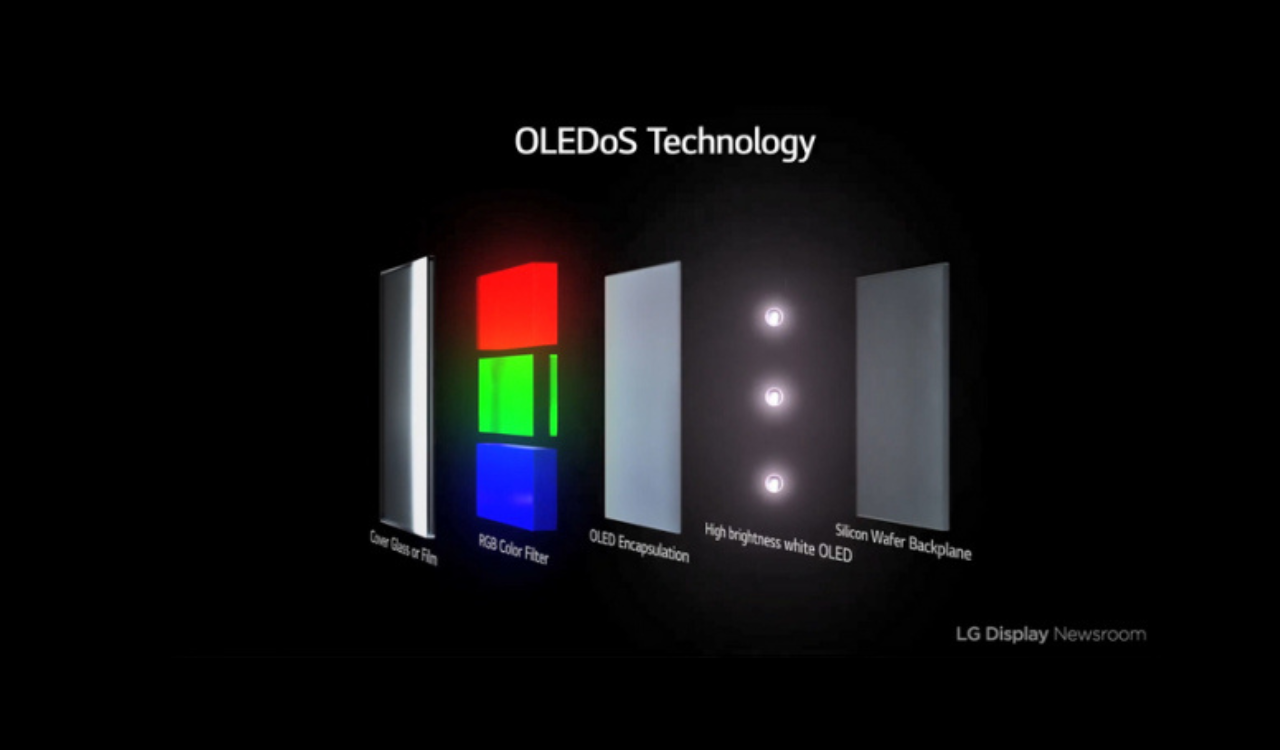Apple recently launched the Vision Pro, an innovative mixed reality (MR) device that combines virtual reality (VR) and augmented reality (AR) capabilities in a decent way. Since its launch, the Vision Pro has started grabbing praise for its impressive features.
One of the main factors driving the popularity of the Vision Pro is its utilization of organic light-emitting diode (OLED) displays, which provide high-quality 4K visuals in close proximity to the user’s eyes.
As per the device structure it comes with two tiny displays, each about the size of a postage stamp. Manufacturing small 4K OLED displays presents a significant technical challenge, as it requires expertise similar to that needed for producing large 4K OLED TVs.
Traditional displays for televisions and smartphones utilize OLED elements on glass substrates. However, the Vision Pro’s display is created by depositing OLED elements on a silicon wafer, which has led to the designation OLED On Silicon (OLEDoS).
LG Display and Samsung Display
For your information, Sony is currently leading the OLEDoS market, while LG Display and Samsung Display are actively developing related technologies. Sony, known for its image sensors, lenses, and PlayStation VR devices, has been refining its OLEDoS technology since becoming the first company to develop it in 2011.

The OLEDoS display employed in the Vision Pro by Sony boasts over 3,000 pixels per inch, making it significantly denser than the displays found on the iPhone 14 Pro Max and the Galaxy S23 Ultra.
As a result, when wearing the Vision Pro, users enjoy an immersive visual experience without visible pixel borders, reducing eye fatigue. The device’s lightweight design is made possible by the use of silicon wafers. OLEDoS displays are expected to replace glass substrate-based OLED displays or cheaper LCD alternatives in VR-AR devices due to recent advancements in OLEDoS technology.
At CES 2023 in Las Vegas, LG Display unveiled a tiny OLEDoS display measuring 0.42 inches, boasting an impressive 3,500 pixels per inch and emitting 7,000 nits of brightness. As LG Display does not have a semiconductor factory, it reportedly sought assistance from SK hynix to produce silicon wafers for its OLEDoS displays.
Samsung strategy for developing OLEDoS display
Samsung Display with its latest capabilities rapidly moving forward in developing OLEDoS displays using a novel method that eliminates the need for color filters. In May, the company acquired eMagin, a US-based company with original technology for patterning OLED devices onto silicon wafers, for $218 million. Samsung Electronics, the parent company of Samsung Display, is collaborating with Google and Qualcomm on an MR device expected to feature OLEDoS displays from Samsung Display.
Industry experts predict that future iterations of Apple’s MR devices may incorporate OLEDoS displays from LG Display or Samsung Display. This is because Apple typically avoids relying on a single component supplier, and the limited supply of OLEDoS displays from Sony, a competitor in the VR market.
FOLLOW US ON – Telegram and Google News